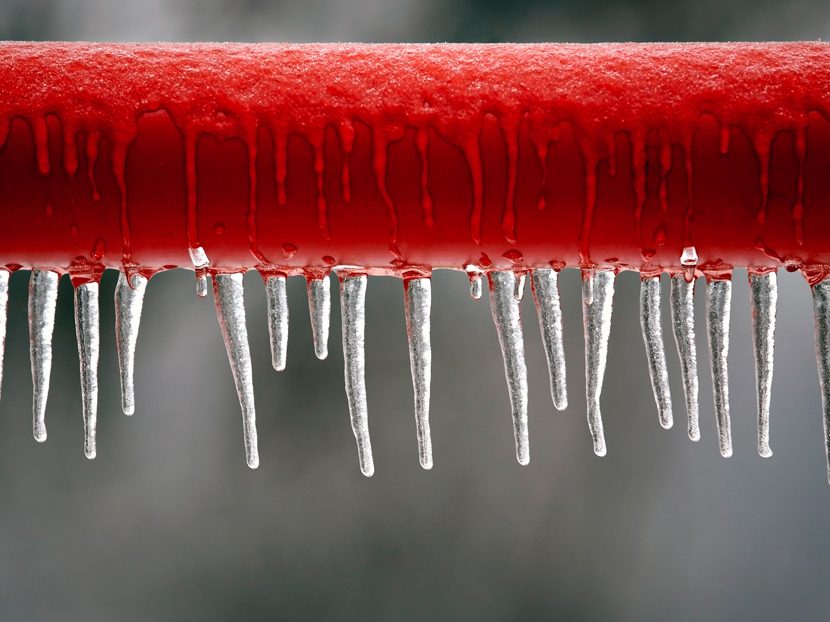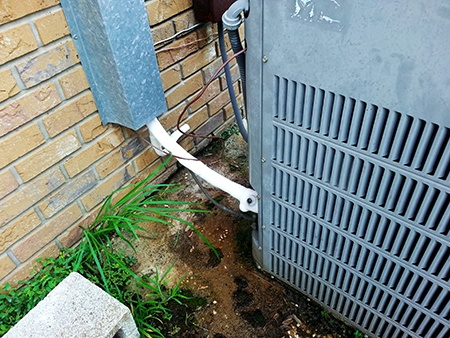Advice on Unfreezing a Frozen AC Pipe - Reinstating Proper Operation
Advice on Unfreezing a Frozen AC Pipe - Reinstating Proper Operation
Blog Article
Here down the page you can get some great advice with regards to How can I fix an air conditioner’s frozen pipe?.

Intro
Finding that your AC pipe is iced up can be worrying, specifically throughout warm summer season when you rely on your a/c unit one of the most. Understanding what to do in such a scenario is essential to stop more damage to your cooling system and guarantee your comfort inside your home.
Comprehending the Causes
Several aspects can add to the cold of an air conditioner pipeline. Understanding these reasons can help you attend to the issue efficiently.
Absence of Airflow
One usual source of a frozen a/c pipe is inadequate airflow. When the air flow over the evaporator coil is limited, it can create the coil to drop below freezing temperature level, causing ice formation on the pipeline.
Reduced Refrigerant Levels
Insufficient cooling agent levels in your air conditioner system can likewise cause an icy pipe. Low cooling agent levels can cause the pressure in the system to go down, bring about the cold of wetness on the evaporator coil.
Cold Weather Conditions
In chillier climates, freezing temperatures outside can contribute to the freezing of AC pipelines. If your air conditioner unit is not properly protected or if there are leakages in the ductwork, cold air can penetrate the system, creating the pipeline to freeze.
Dirty Air Filters
Filthy or stopped up air filters can restrict air movement in your air conditioner system, bring about different concerns, consisting of an icy pipeline. It's important to change or cleanse your air filterings system frequently to ensure proper air flow and stop ice build-up.
Signs of a Frozen Air Conditioner Pipe
Identifying the signs of a frozen AC pipeline is critical for punctual action.
Lowered Airflow
If you see a substantial reduction in air flow from your vents, it could show an icy pipe.
Ice Buildup on the Pipe
Visible ice buildup on the refrigerant line or the evaporator coil is a clear sign of an icy air conditioner pipe.
Unusual Sounds from the Unit
Unusual noises, such as hissing or gurgling, originating from your air conditioner system can signify that there's ice existing on the pipe.
Immediate Actions to Take
When faced with a frozen AC pipe, it's necessary to act quickly to stop further damage to your cooling system.
Turning off the air conditioning
The initial step is to shut off your a/c to stop the system from running and worsening the problem.
Looking for Blockages
Examine the area around the indoor system for any type of blockages that may be obstructing air movement, such as furnishings or curtains.
Defrosting the Pipe
You can make use of mild approaches like positioning towels soaked in warm water around the frozen pipe to assist thaw it gradually.
Preventive Measures
Taking safety nets can assist prevent future events of a frozen AC pipeline.
Routine Maintenance Checks
Arrange regular maintenance talk to an expert HVAC specialist to guarantee that your air conditioning system is running effectively.
Altering Air Filters
Frequently replace or clean your air filters to stop airflow restrictions and maintain optimum efficiency.
Protecting Exposed Pipes
If your air conditioning pipelines are subjected to cold temperature levels, consider insulating them to stop cold during winter months.
Seeking Professional Help
If DIY approaches fall short to solve the problem or if you're unclear regarding just how to proceed, it's ideal to seek aid from a certified HVAC professional.
When DIY Methods Fail
If your efforts to thaw the pipe or address other issues are unsuccessful, it's time to hire a professional.
Value of Hiring a Professional HVAC Technician
A qualified HVAC professional has the experience and tools necessary to identify and fix issues with your AC system safely and properly.
Conclusion
Managing an icy a/c pipeline can be a frustrating experience, however understanding how to react can help reduce damages and bring back comfort to your home. By comprehending the reasons, identifying the indicators, and taking prompt action, you can successfully deal with the issue and protect against future occurrences.
What to Do If Your AC Line Is Frozen
Make Sure All Supply and Return Air Vents Are Open
If you notice problems with airflow, the first thing you should do is check your supply and return vents. Supply vents distribute clean, conditioned air throughout your home. As this air becomes stale, it’s pulled into the return vent, where it’s reconditioned before being sent back out through the supply vent.
When these vents are closed, air won’t flow in the home. Before examining your AC, check the vents in every room and ensure they’re all open.
Check for a Dirty Air Filter
Another possible cause of limited airflow is a dirty air filter. Your air conditioner’s filters catch elements you don’t want to breathe in, such as dirt and dust. Over time, filters can become clogged, ultimately blocking air from flowing in and out. The lack of airflow can then cause the entire coil to freeze and will completely restrict any air from moving through it. The AC may need to be powered off for one to two days to allow the coil to thaw after replacing the filter to allow proper functioning of the unit. This debris can also accumulate on your AC’s evaporator coil, requiring a more serious repair. In general, air filters should be cleaned regularly (about every two weeks).
Assess Your Outdoor Unit
In addition to checking your AC, assessing the outdoor unit is a good idea. Also known as the condensing unit, it works with your interior unit to release heat outside. An issue with the outdoor unit can result in rising internal temperatures.
Overgrown Shrubs or Clogged Leaves
From leaves and twigs to shrubs and debris, there’s no shortage of outdoor elements that can accumulate around your condensing unit. When these elements get lodged inside the unit, they can block airflow. Fortunately, removing the blockage can solve the problem.
Sounds of a Broken Fan
Shrubs and leaves aren’t the only things that can impede your outdoor unit’s airflow. If the fan is broken, the unit won’t be able to properly get rid of heat — which means the internal temperature won’t go down. First, make sure the fan is spinning. If it is, check for the following sounds of a broken fan:
Buzzing Rattling Screeching Hissing Clicking Preventative Measures
Nobody wants to deal with a frozen AC line. In addition to causing problems with your air conditioner, they require professional repairs. On the bright side, there are preventative measures you can take to help ensure this issue doesn’t arise in the first place.
https://www.coopergreenteam.com/blog/what-to-do-if-ac-line-frozen

I'm very taken with What Do I Do If My AC Pipe Is Frozen and I hope you enjoyed my blog entry. Sharing is good. Helping others is fun. Many thanks for your time. Don't forget to come by our website back soon.
Call Today Report this page